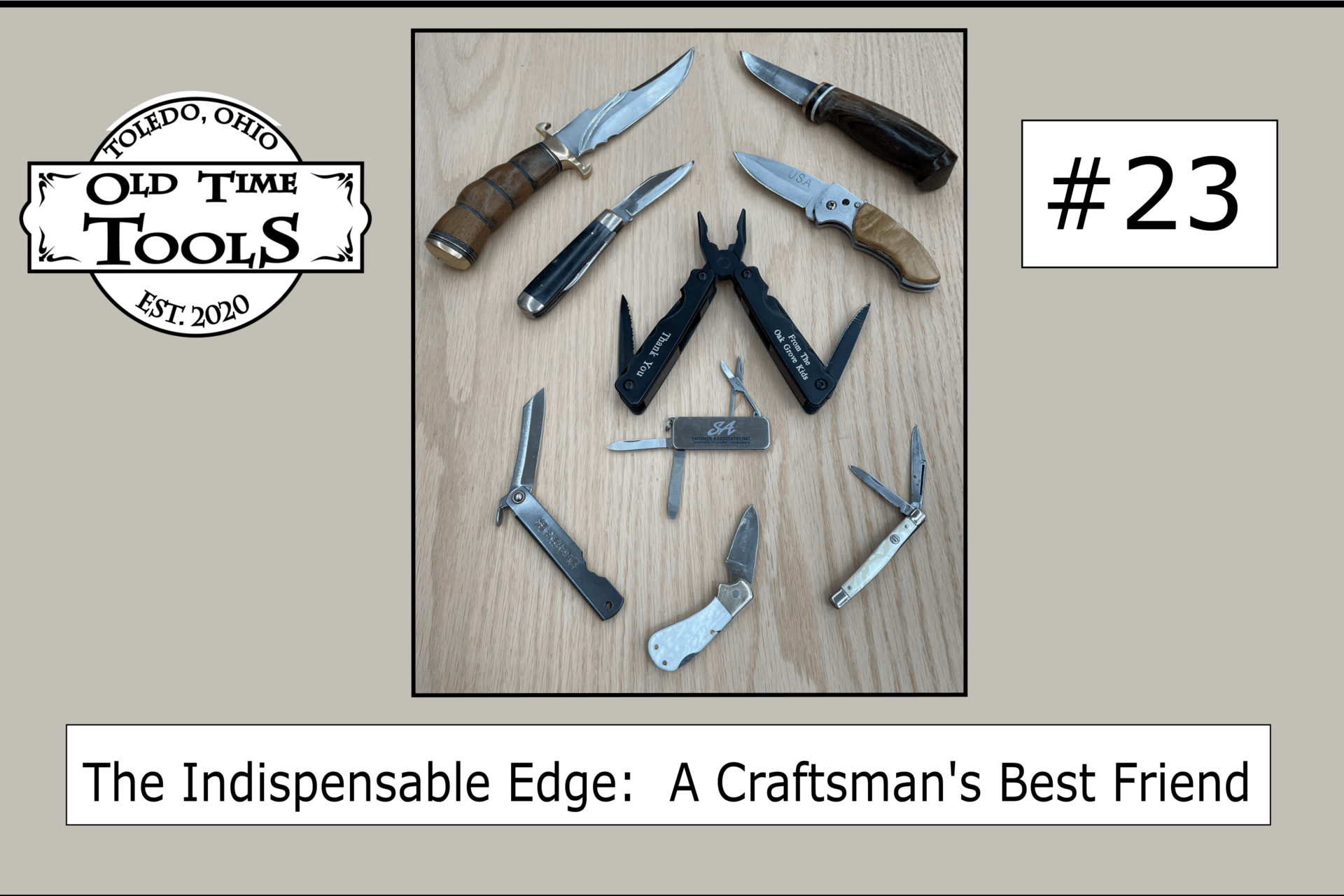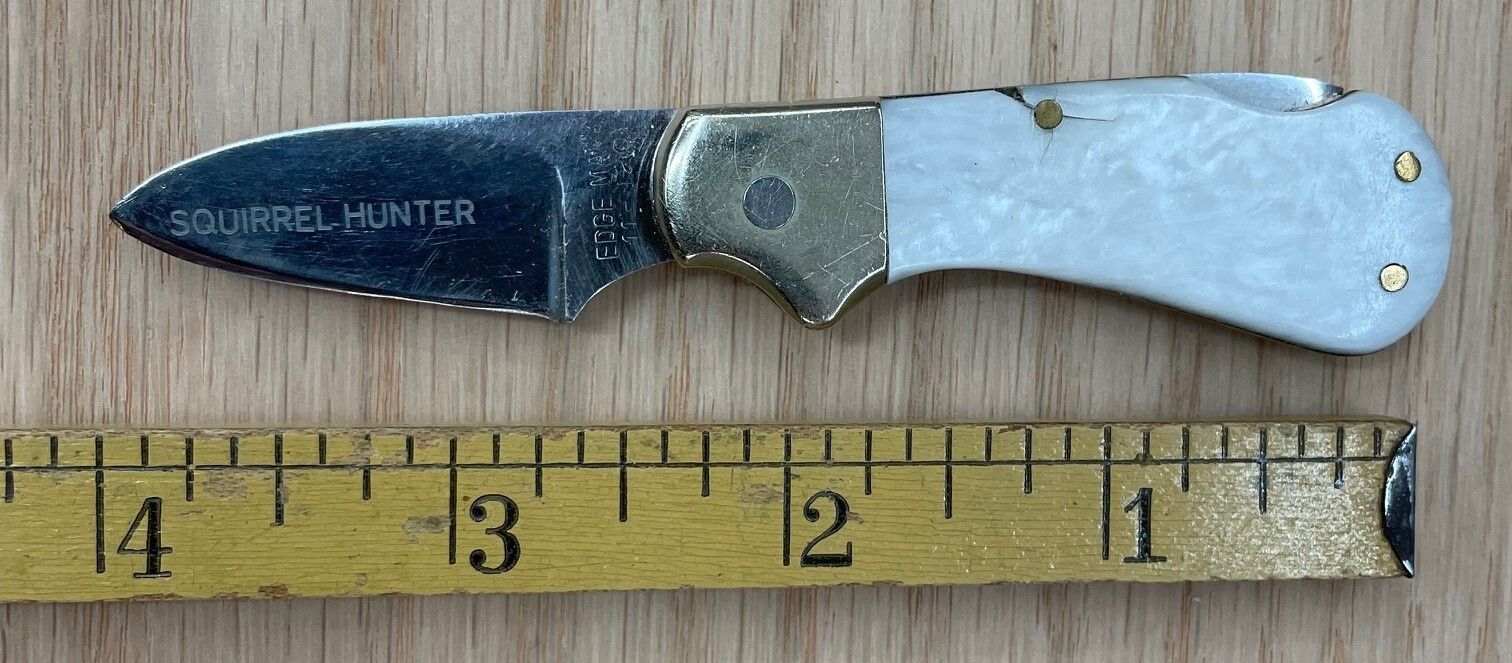- Old Time Tools
- Posts
- The Indispensable Edge: A Craftsman's Best Friend
The Indispensable Edge: A Craftsman's Best Friend
The Many Lives of a Pocket Knife

As a soldier prepares for battle, he makes certain his weapons are ready. His sword, shield, and spear are the tools of his trade, and his preparedness is everything. Though I am no warrior heading into combat, I enter my shop with the same mindset: prepared to face whatever challenges await and ready to attack them head-on.
My shop is my battlefield, and I rely on the tools I keep close. I prefer not to wear a shop apron, as the pressure on my neck quickly becomes irritating. And in the summer heat, that extra layer is simply unbearable. Instead, I rely on a small leather pouch clipped to my jeans' side pocket. In it, I carry my essentials: a pencil, a folding ruler, a bevel, a compass, and my knife. A wooden square rides securely in my back pocket. I use these items so frequently that I refuse to let them be far from my reach.
The Versatility of the Pocket Knife
My knife is used for far more than just cutting string or opening packages. My most frequent use is cleaning up a board after it leaves the miter saw. Depending on the wood species, the cross-cut edge can be slightly splintered. By dragging the knife blade across the edge, I can quickly remove the slivers and achieve a cleaner, clearer cut line.
I also often use the knife as a quick center punch for drilling holes. While an awl is the ideal tool for this task, my knife is always quicker to grab. By twisting the blade back and forth a few times into the wood, I create a perfect dimple for my drill bit to nestle in. If I need to start a cut with my hand saw, I use the knife to make a small notch for the saw blade to rest in, ensuring the cut begins in the exact right place. And finally, I love to use my knife just to whittle or carve as a means of taking a small break and relaxing my mind.
A Note on Knife History
The pocket knife has a fascinating history, especially in Japan. It surged in popularity thereafter, when Emperor Meiji banned the wearing of swords in public in 1876. This law accelerated the decline of the samurai and left many traditional blacksmiths and sword makers without a livelihood.
Resourcefully, these skilled artisans began producing woodworking tools, which included the now-famous Higonokami pocket knife. The name combines "Higo," an old Japanese province, and "Kami," an ancient, powerful aristocratic title. This simple, elegant knife became incredibly popular; even schoolchildren carried one to sharpen their pencils.

Higonokami Knife- the common carpenter’s knife
The Knife That Came Home
I own a few good knives now, but my memories often return to the one I carried when I was just twelve years old. It was a small pocket knife with a distinctive pearl handle and the name "Squirrel Hunter" etched on the blade. I loved that knife, but it was somehow lost. Sure, at twelve, I could have easily dropped it or left it somewhere. Yet, I always suspected it was stolen because the last thing I remember was my brother’s friend commenting on what a "nice knife" it was.
Years passed, but the memory lingered. One evening, I decided to look online to see if I could find that old knife again. It truly is amazing how the internet allows us to retrieve so many things from our past, recalling them as if for the first time—a powerful walk down memory lane. Eventually, I came across a listing from an estate sale, and it gave me the crucial details: the knife was made by the Gutmann Cutlery Co., an American importer active from the 1950s to the late 1990s in Mount Vernon, NY. This particular model was manufactured exclusively for them in Seki, Japan, ranging in years from the late '60s to the mid-'80s—exactly the time I would have acquired it in the early '80s.
The name "Squirrel Hunter" was a marketing tactic used by the company to appeal to small game hunters. Though I never hunted rabbits or fish with it, the knife was still incredibly desirable to me.

My childhood ‘Squirrel Hunter’ knife
The Journey Back
It took months of dedicated searching, but I finally spotted one on eBay and quickly bought it for $19. When it arrived, holding it again brought back a flood of vivid memories. The knife felt a little bit smaller than I remembered, and the shape was slightly different from my childhood recollection, but there was no doubt—this was the knife.
I began thinking, "How did I acquire this?" I then remembered riding my bicycle to Janny’s Ace Hardware on the corner of Secor and Alexis Road. They had a huge knife display case. After you walked past the plumbing section and the cashiers, and just beyond the paint section, you hit the knife aisle. The display was homemade, constructed of plywood and plexiglass, with the large selection angled perfectly for viewing. I vividly recall seeing my knife there, priced at $7.95. That wasn't a huge sum, but considering my allowance was only $2 a week back then, it meant acquiring it was a serious, month-long savings endeavor.
A Daily Reminder
I am still amazed at how a simple pocket knife, aided by the internet, was able to help me recall such precise, vivid memories. That knife stays with me now. I put it in my pocket every morning and place it on my nightstand every night. It’s a constant reminder of my childhood and the time that has passed. This time, being older and a little bit wiser, I sincerely hope I won’t have to buy it again on account of losing it.
Reply